Colorado is famous for its rugged mountains and breathtaking scenery. However, it actually has a wide and diverse range of habitats, including plains, forests, and even deserts. With such a varied landscape it is the perfect place for many animals to thrive — including snakes. There are 25 species of snakes in the state and several of them can be found in and around the water. So, let’s find out which are the water snakes in Colorado, including where to find them, what they look like, and which (if any) are dangerous!
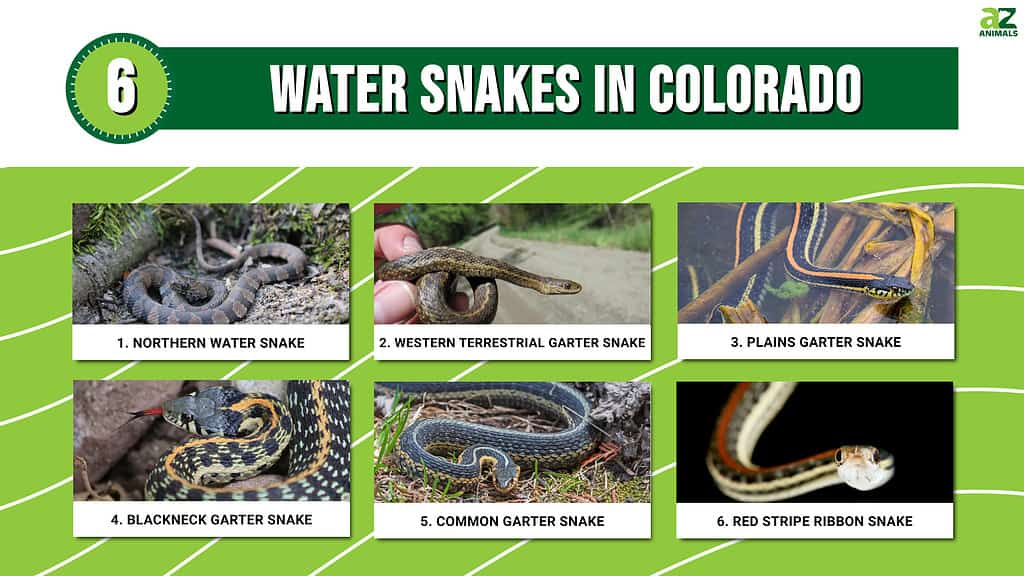
1. Northern Water Snake (Nerodia sipedon)
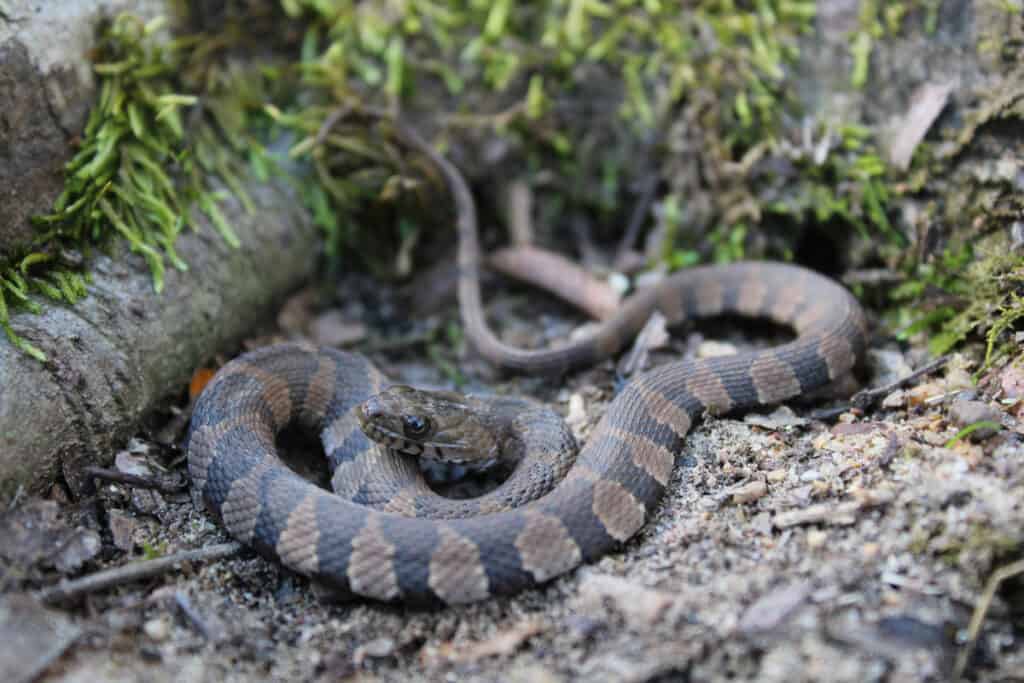
Northern water snakes live in most freshwater habitats across the state.
©Tucker Heptinstall/Shutterstock.com
First, we have the northern water snake, which is a powerful snake that reaches approximately five feet long. These snakes are typically brown with a series of darker crossbands and blotches. The crossbands begin at their head and then become blotches as they approach the tail. Northern water snakes live in the eastern half of the state and inhabit most freshwater locations. They do not usually stray far from the water and can often be seen hanging from nearby branches or basking on the shore. Northern water snakes are ambush predators and prey mainly on fish and amphibians. They are not venomous but are highly defensive if they are threatened, often striking in an attempt to protect themselves.
2. Western Terrestrial Garter Snake (Thamnophis elegans)
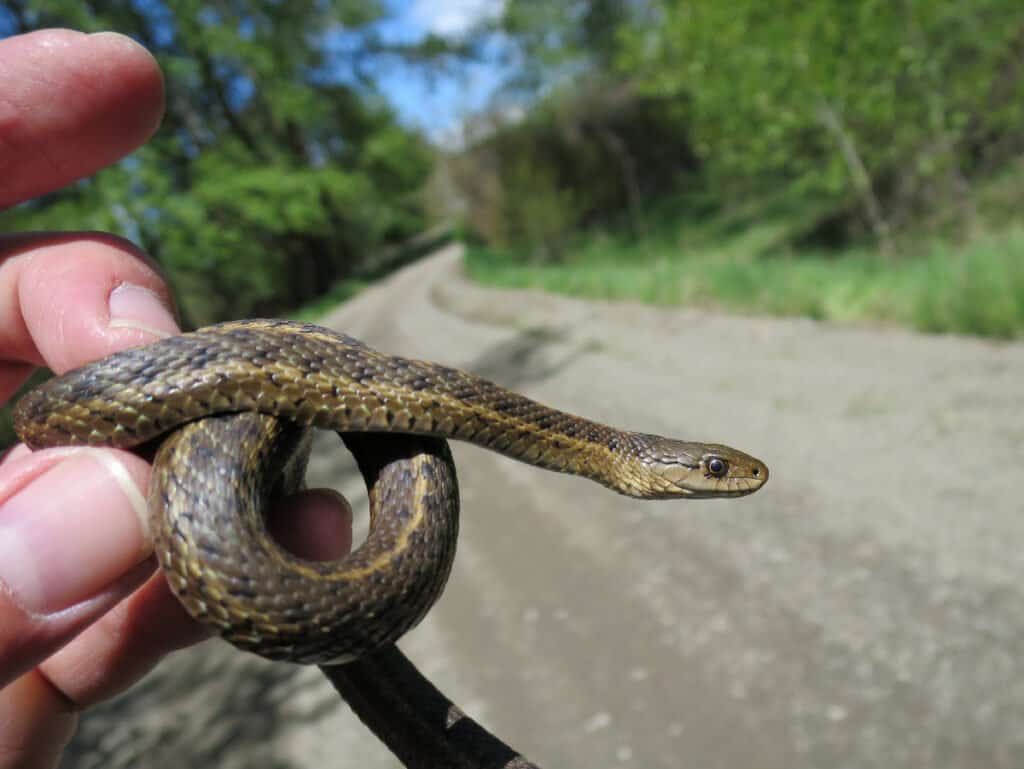
Western terrestrial garter snakes prey on a variety of fish, frogs, and lizards.
©Randy Bjorklund/Shutterstock.com
The next water snake in Colorado is the western terrestrial garter snake, which is the first of four garter snakes in the state. Western terrestrial garter snakes inhabit the majority of the state, with the exception of the northeast corner. They live in woodlands, forests, and grasslands, but are closely associated with water. They are capable swimmers and prey on a variety of fish, frogs, slugs, lizards, and small mammals. Western terrestrial garter snakes are 24 to 42 inches long and are brown or gray with white, yellow, or orange stripes. They also have red or black spots between their stripes.
3. Plains Garter Snake (Thamnophis radix)

Plains garter snakes usually have a bright orange or yellow stripe on their back.
©Alyssa Metro/Shutterstock.com
The next garter snake is the plains garter snake, which reaches approximately 42 inches long. Plains garter snakes are greenish-gray to brown with a distinctive orange or yellow stripe down the center of their back. They have a pale stripe along each side which are located on the third and fourth row of scales. Plains garter snakes also have noticeable black bars on their lips and some may have yellow markings on the top of their head. These snakes inhabit the eastern half of the state in areas close to swamps, marshes, ponds, and streams. They are typically active between April and October, with juveniles being born around October. Plains garter snakes are not dangerous to humans and prey mainly on small amphibians, slugs, and earthworms.
4. Blackneck Garter Snake (Thamnophis cyrtopsis)
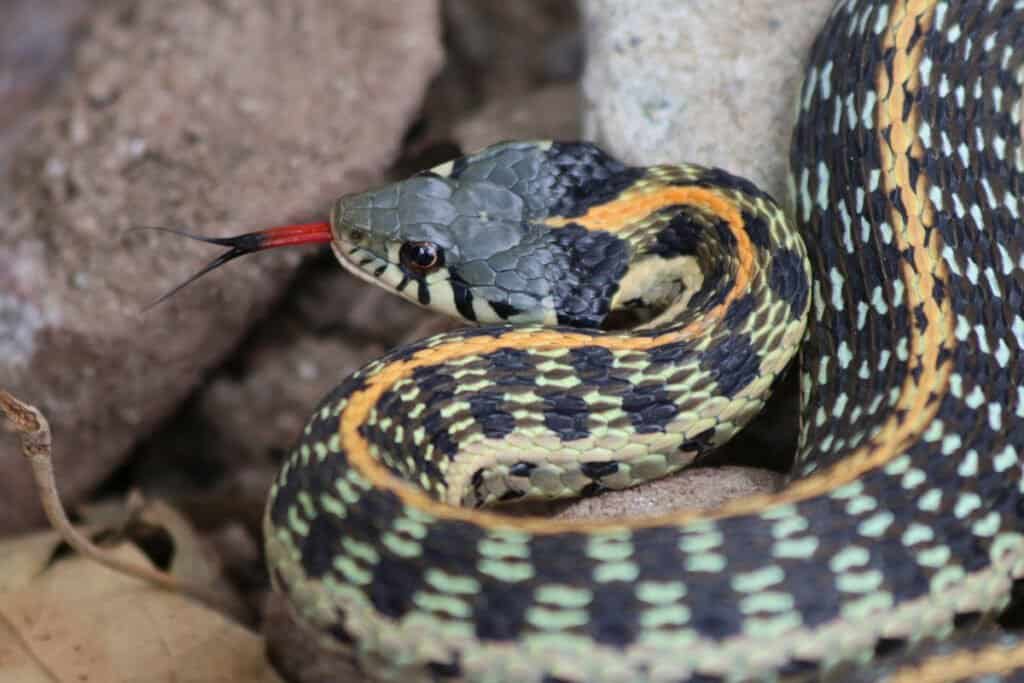
The blackneck garter snake has an orange dorsal stripe with two white-colored lateral stripes.
©Creeping Things/Shutterstock.com
Blackneck garter snakes are the next water snakes in Colorado. These snakes mainly live in the southeastern and southwestern regions of the state where they can be found in grasslands and woodlands close to water. They are good swimmers and prey on a variety of fish and amphibians, although they also sometimes eat slugs and earthworms. Blackneck garter snakes can be anything from 12 to 42 inches long. They are typically olive brown to black with a yellow or orange stripe on their back. Like the other garter snakes, they also have two lateral stripes, although these tend to be closer to white. They also have large black blotches on their neck, which is where they get their name from.
5. Common Garter Snake (Thamnophis sirtalis)

Common garter snakes have venomous saliva that they use to slow down their prey.
©iStock.com/Wildnerdpix
The common garter snake is a snake with a highly variable appearance. They are approximately 48 inches long and have a dark brown to black ground color. However, their stripes can be orange, white, yellow, blue, or even green. They also often have small red spots between their stripes. Common garter snakes inhabit the northeastern corner of Colorado, typically in areas close to water. They prey on fish, amphibians, earthworms, slugs, and small rodents. Common garter snakes are not considered to be truly venomous as they are not dangerous to humans. However, they do have a mildly venomous saliva which they chew into their prey to incapacitate them.
6. Red Stripe Ribbon Snake (Thamnophis proximus rubrilineatus)
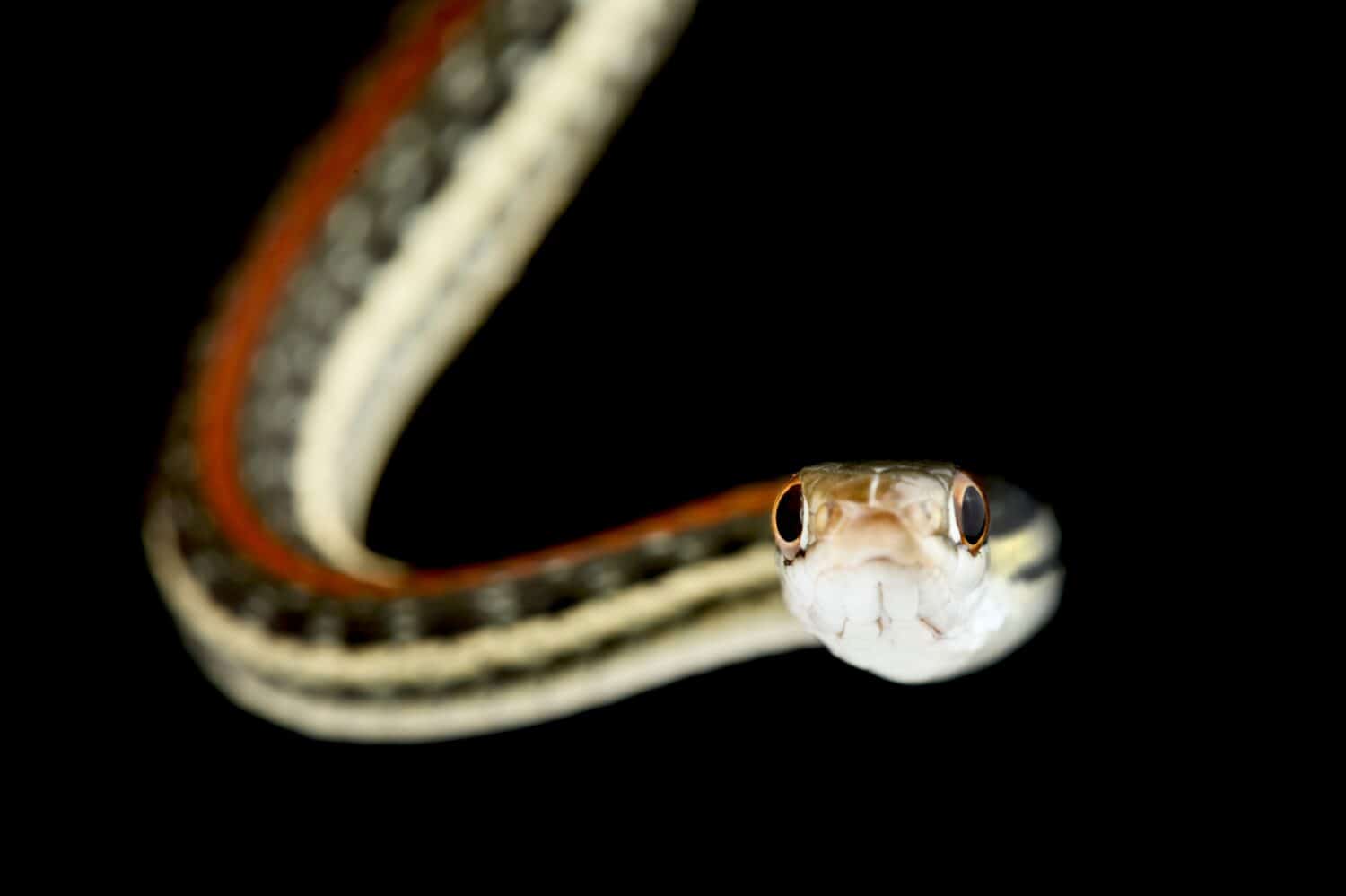
Red stripe ribbon snakes live close to water and prey mainly on amphibians.
©reptiles4all/Shutterstock.com
The final snake is the red stripe ribbon snake, which is a subspecies of the western ribbon snake. Red stripe ribbon snakes have long, thin bodies and are approximately 20 to 30 inches long. They have a dark ground color with three stripes. The two lateral stripes are yellow while the dorsal stripe is bright red. Red stripe ribbon snakes live close to the edge of swamps, streams, ponds, and lakes in Colorado. They are quick snakes and flee into the water at the first sign of danger. They mainly prey on amphibians, although they will also sometimes eat lizards and small rodents.
Summary of 6 Water Snakes Lurking in Colorado Waters
Here’s a recap of the six snake species that can be found in and around the waters of Colorado.
| Number | Snake Species | Scientific Name | Length | Habitat |
|---|---|---|---|---|
| 1 | Northern Water Snake | Nerodia sipedon | About 5 feet | Eastern half of Colorado in most freshwater locations |
| 2 | Western Terrestrial Garter Snake | Thamnophis elegans | 24-42 inches | Most of the state (in woodlands, forests, and grasslands) except for the northeast |
| 3 | Plains Garter Snake | Thamnophis radix | About 42 inches | Eastern half of the state in areas close to swamps, marshes, ponds, and streams |
| 4 | Blackneck Garter Snake | Thamnophis cyrtopsis | 12-42 inches | Mainly in the southeast and southwest in grasslands and woodlands near water |
| 5 | Common Garter Snake | Thamnophis sirtalis | About 48 inches | Northeastern corner of Colorado in areas close to water |
| 6 | Red Stripe Ribbon Snake | Thamnophis proximus rubrilineatus | 20-30 inches | Close to the edge of swamps, streams, ponds, and lakes |
The photo featured at the top of this post is © iStock.com/randimal
Discover the "Monster" Snake 5X Bigger than an Anaconda
Every day A-Z Animals sends out some of the most incredible facts in the world from our free newsletter. Want to discover the 10 most beautiful snakes in the world, a "snake island" where you're never more than 3 feet from danger, or a "monster" snake 5X larger than an anaconda? Then sign up right now and you'll start receiving our daily newsletter absolutely free.
Thank you for reading! Have some feedback for us? Contact the AZ Animals editorial team.







